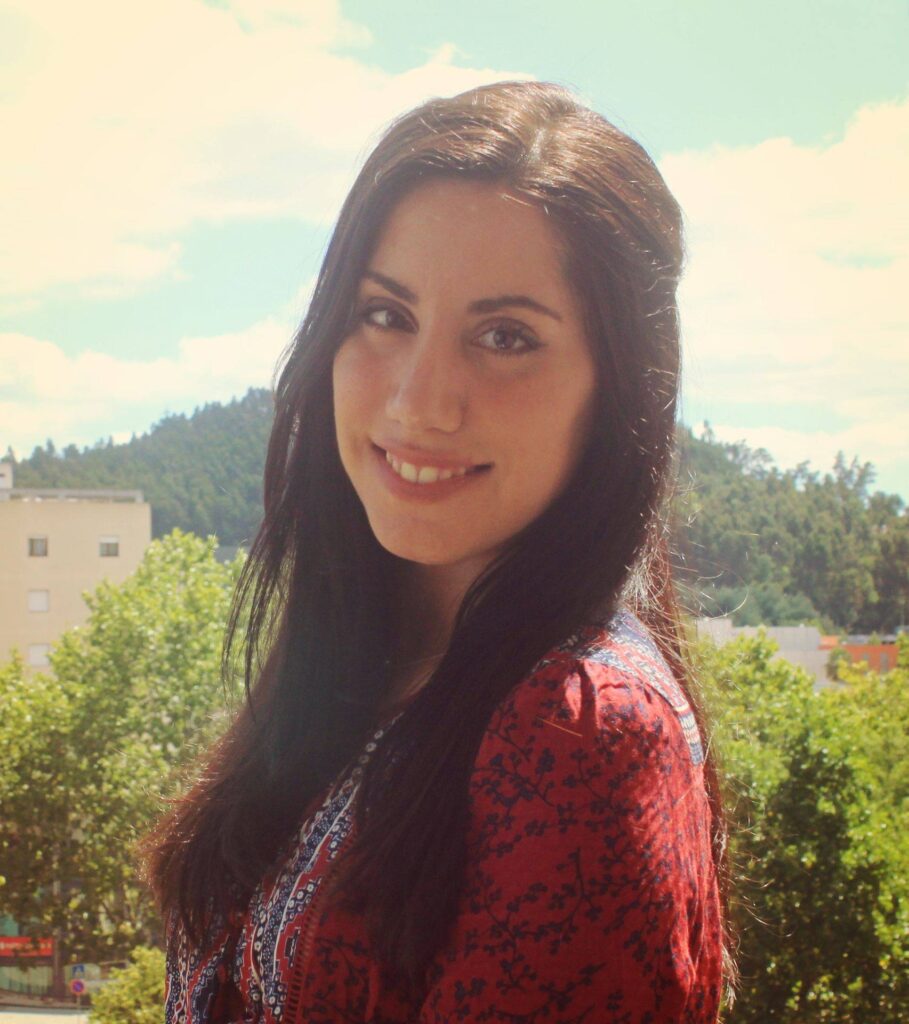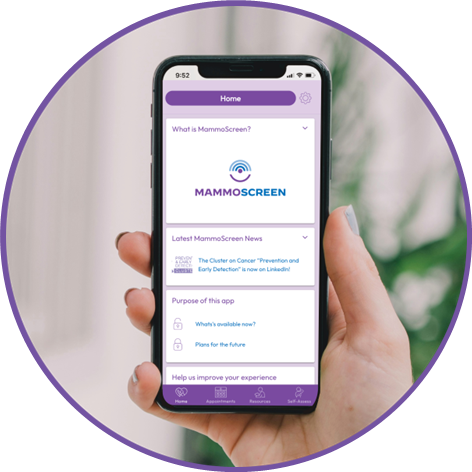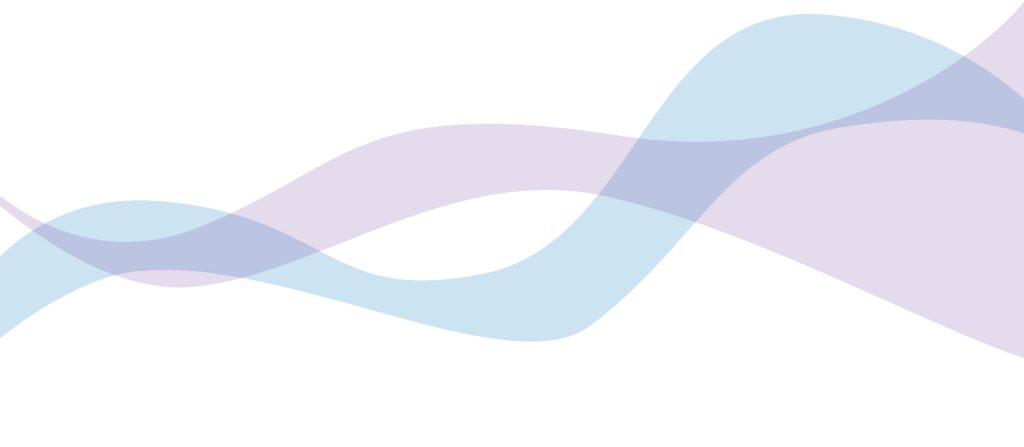Interview with Mariana Coutinho, a young patient advocate

Mariana Coutinho, a young Portuguese patient advocate, shares her views and lived experience. Mariana began her work as a volunteer in 2018, at the Oncology Service of the Paediatric Hospital of Coimbra, Portugal, supporting hospitalized children and adolescents affected by cancer. In 2019, she became a member of the Steering Committee of Youth Cancer Europe, an organization dedicated to raising awareness on issues that negatively impact young cancer patients, such as difficulties in cross-border healthcare, financial discrimination, fertility preservation, dental care, reconstructive surgery, and mental health. She holds a master’s degree in clinical psychology and is currently working as Assistant to the Director of EVITA, one of the MammoScreen Project partners, since 2023. Before that, she also worked as a psychologist at EVITA, supporting people diagnosed with cancer. Mariana was diagnosed with a rare form of liver sarcoma in 2019 and a second primary cancer diagnosis of breast cancer in 2022. We thank Mariana for this unique opportunity to gather her insight into the hopes and fears of young cancer survivors in a rapidly changing healthcare environment. MammoScreen (MS): Mariana, from a psychologist’s point of view, can you share what it means to live with hereditary cancer? Mariana Coutinho (MC): During my internship as a clinical psychologist at EVITA, supporting individuals diagnosed with hereditary cancer and mutation carriers who never developed cancer, it was very clear to me how hereditary cancer can have a significant mental health impact and influence the well-being and overall quality of life of individuals affected by this condition. People with a family history of cancer often live with a heightened sense of vigilance and anxiety about their own risk, and a confirmed diagnosis of being a mutation carrier can also lead to the anticipation of developing cancer, which can cause high levels of anxiety and depression. Deciding whether to undergo genetic testing and – when obtaining a positive test result – whether to take preventive measures, including very invasive and aggressive procedures such as mastectomies or prophylactic surgeries, can be extremely stressful, and the weight of these decisions can lead to a significant psychological burden. Individuals may even struggle with their body image and sense of identity. Concerns about future health may also affect major life decisions, such as career choices, family planning, and relationships. Family dynamics are usually also affected. Parents often worry about the possibility of passing the genetic mutation to their children, and may experience guilt. The entire family can be affected, and communication between family members about a high risk for cancer, as well as the possibility of undergoing genetic testing, can be a true challenge. There is no doubt that the mental health impact of hereditary cancer is profound, necessitating a comprehensive approach to care that addresses both the psychological and physical dimensions of this condition. MS: Being a cancer survivor, how do you take care of your own health and well-being post-treatment? MC: Since my first cancer diagnosis, in 2016, I have acquired the habit of practicing daily meditation. Sometimes I incorporate yoga in my practice as well. Most importantly, I try to live a mindful life. While I was doing my master’s degree, which was also the time when I received my first diagnosis, I actually focused my academic studies on the benefits that mindfulness has on the mental health impact of chronic and life-threatening diseases. I usually joke that, without knowing what awaited me, I was studying to save my own life. Having a mindful attitude has been essential for me to deal with the rollercoaster and uncertainty that is living with and beyond cancer. I try to focus on the now and not be overwhelmed by fears about the future. This helps me find peace and stability. Of course, there are days when I feel more anxious or depressed, especially when I must undergo follow-up scans, but usually I try to observe my fear and my experiences without judgment and accept what has happened and is happening with me, as part of being human. Besides this, being in contact with nature is fundamental for me, and I believe it has had a very important impact on my well-being. I try to escape to the mountains or seaside whenever I can. I also try to exercise regularly and this year I have discovered a passion for running. I try to eat a balanced diet and I feel like the quality of my sleep can really affect my quality of life too. Keeping a healthy lifestyle also gives me the sensation of having a little bit more control of my health and this helps dealing with anxiety about a possible cancer recurrence, for example MS: How could you benefit from a device like MammoWave? MC: Due to my previous diagnosis of sarcoma, I need to avoid radiation exposure whenever possible, as it could increase the possibility of a recurrence. Therefore, I can’t have mammography done; instead, I have an annual breast MRI as a follow-up scan. This is the same situation that a lot of women who are mutation carriers also must face, like those who have inherited TP53 mutations, associated with Li-Fraumeni Syndrome. Because of this, and after hearing so many stories of breast cancer patients that had tumours that were missed during screening exams, I know that I would feel much less anxious if I knew that the device being used for my follow up tests was accurate and reliable, as we hope MammoWave will prove to be. This exam would also be much more comfortable than going through a mammography or breast MRI and less anxiety-inducing because of this. MS: You are actively collaborating in the MammoScreen project. What is your biggest hope for this project? And biggest fear? MC: My biggest hope for the MammoScreen project is that it will significantly improve early detection and accurate diagnosis of breast cancer, ultimately saving lives. I envision a future where screenings are more accessible, comfortable and precise, using devices like MammoWave. This could not only
A step forward to improve breast cancer screening: the MammoScreen Lisbon Meeting
Last 22, 23 and 24th of May, it was EVITA´s pleasure to welcome all the MammoScreen partners to Lisbon, a city known for its vibrant culture and rich history, on the occasion of the 16th Consortium Meeting, the 1st Stakeholders Workshop and the Patient Workshop. The anticipation was high for groundbreaking discussions, fostered by the collaborative spirit of the Consortium and the expertise of the invited Stakeholders. The Champalimaud Foundation, a worldwide reference for scientific research and clinical practice, offered the perfect stage for the event, located in the riverside area of Belém, at the heart of historic Lisbon. The Champalimaud Foundation, one of the recruitment units in the MammoScreen clinical trial, was the chosen venue for the Consortium Meeting. The perfect backdrop for the 1st Stakeholders Workshop was the Foundation’s Auditorium, with its striking large elliptical window over the river Tagus and the Belém Tower that “greets those who enter it and stimulates ambition”. The two gatherings couldn´t have happened at a more auspicious moment: the installation of MammoWave devices (led by UBT) and the initiation of clinical trials (coordinated by SESCAM) is well underway; ELAROS was ready to present a Beta Lite version of the MammoScreen App born of a strong collaboration with EVITA. The app was presented to the General Assembly during the Consortium Meeting and to patients during the Patient Workshop; LSBU had important advancements to report on the data analysis models that support the interpretation of MammoWave signals; researchers at IMT LUCCA compiled a review of the current landscape on the use of cutting-edge Artificial Intelligence (AI) within breast imaging; and, last but not least, our Project Management team from TLS had important updates about the communication and dissemination efforts and the reporting commitments of our project. The excellent participation of our advisory board members for scientific, ethics and patient group coordinators throughout the meeting steered fruitful discussions and promoted a collaborative atmosphere between scientists, clinicians, and patient advocates. The 1st Stakeholders Workshop took place in the afternoon of the 23rd of May. This pivotal event brought together diverse voices and perspectives to address challenges and opportunities regarding the adoption of new technologies, like MammoWave, in care pathways and screening programmes in the European health space. Key challenges of the project, such as demonstrating high sensitivity and accuracy in the identification of breast lesions, improving access to screening in underserved populations, and integrating this new technology into existing healthcare systems, were discussed. Overall, the Lisbon Consortium Meeting achieved several key objectives, including progress review, fostering collaborations, identifying challenges and pointing towards actionable strategies for the deployment of the MammoWave technology. The rapid evolution of medical technology is transforming healthcare delivery, improving patient outcomes and driving clinical practices to change at a fast pace. The involvement and collaboration of diverse stakeholders is paramount to navigating this complex landscape, and the 1st Stakeholders Workshop was an important milestone, with its strong call to action for policies that support innovation while ensuring patient safety and efficacy. It was also an opportunity for the Consortium to identify key areas for dissemination and communication. As the medical industry continues to evolve, collaborative efforts like the MammoScreen Project will be essential in driving innovation, improving patient care, and ensuring the successful integration of new technologies into healthcare systems. Last but not least, the meeting with Patients confirmed again the strong importance of involving the voice of patients with a support-decision making process, to gather fundamental insights from the citizens who are the effective beneficiaries of the project’s goals. This article is part of #2 issue of MAMMOSCREEN newsletter: read the full issue here.
From patients to clinicians: the focus of co-creating an App

When creating an App, the key to success lies in understanding the basics: who is it for, how does it provide a benefit, and how do we make its use a positive experience?With these pillars in mind, ELAROS started the design and creation process for the MammoScreen App. The initial step was to design a questionnaire in collaboration with EVITA as part of this outreach, to gain some initial insight into the needs and features that users could potentially want included in the App. During the design process (highlighted in the picture shown below), ELAROS and EVITA organised workshops targeting the key audience and allowing individuals to offer feedback and suggestions on the proposed design and features of the App. The suggestions and feedback were crucial in the development process and were implemented where possible. Additionally, individual meetings with clinicians were held to allow them the opportunity to share thoughts on the proposed features and design. Afterwards, the feedback was transformed into tangible ideas, generating a product specification that would cater to the needs of the user whilst still ensuring that it was pleasant to use, look at and listen to. ELAROS began the initial designs in Figma, a design tool that allows an App to be designed without having to use any coding. A reliable and trusted outsourced App development specialist was then used to aid in the coding process. Each step and design stage had the continuous feedback and approval of the partners EVITA and UBT, as well as the wider MammoScreen consortium. This workflow created a constantly evolving product that moved closer to the finalised vision of the App. Additionally, patient and public workshops were run throughout the design process, and the generation of a Beta Lite version of the App was used to demonstrate its capabilities, design and plans for further development. The feedback ELAROS received from these meetings was extremely valuable in guiding them towards the final design process. ELAROS is seeking to refine the Lite app to make it available to download for the public within the year. Through continuous involvement of all the MammoScreen partners, the patients and the public, ELAROS has created something that is fit for purpose: providing detail without being obscure, providing functionality without sacrificing accessibility, and adding value to the users without losing sight of the App’s purpose. The outcome of this process was presented during the Lisbon event.
Umbria Bioengineering Technologies (UBT): the engineers of the MammoWave technology

Umbria Bioengineering Technologies (UBT) is an Italian company established in 2015 as a spin-off of the Department of Physics and Geology (FISGEO) at the University of Perugia. UBT offers cutting-edge biomedical solutions that use microwaves instead of ionizing radiation (X-Rays), specialising in research and development of microwave imaging techniques for diagnostic purposes. The company also provides services in measurement and risk assessment of exposure to electromagnetic fields, as well as electromagnetic compatibility measurements. UBT is responsible for the development and patenting of MammoWave, the device under investigation in MammoScreen, and its application in the detection of breast lesions. UBT develops and commercialises a portfolio of innovative medical devices, complementing their unique expertise in microwave imaging and mechatronics with the application of Artificial Intelligence (AI) for data analysis, in a close partnership with experts from the London Southbank University (LSBU). The LSBU team is also a partner in the MammoScreen Consortium. Since 2017, the synergy between UBT and LSBU has resulted in multiple co-sponsored PhDs and Post-graduate studentships, contributing to a rapid advancement of knowledge in the field of antennas and radiation applied to healthcare. They also collaborate in bringing other devices, such as BrainWave, used for brain stroke detection and classification, and LungWave, for the detection and monitoring of lung lesions, to the forefront of the current trend in development of X-Ray free solutions for the detection of various diseases. In the framework of the MammoScreen project, UBT oversees the manufacturing and distribution of MammoWave, also contributing to the definition of the clinical protocol for testing the device in various clinical centres in Europe. MammoScreen clinical investigation involves 5 different countries; it has already started in Italy, Portugal, Spain and Poland and is going to start in Switzerland in the next months. The team hopes that the inherent safety of the MammoWave device (which uses microwave signals rather than ionizing radiation), the absence of any breast compression and the easy examination routine, supported by AI, will be an incentive for adoption of the device into population screening programs. You can follow UBT´s activities on LinkedIn and YouTube.
Issue #2 of the MAMMOSCREEN newsletter is finally out!

Dear Reader, We invite you to join us in another exciting Newsletter about the MammoScreen journey. Learn how our collaborative efforts and innovative solutions contribute to Mission Cancer, one of the five biggest challenges of the humanity tackled by the EU at all levels, including research and innovation funding (Introduction). Read about the Lisbon Consortium Meeting, where we discussed with expert stakeholders about challenges and opportunities for the introduction of MammoWave into healthcare (Featured Article). Meet the UBT team, an innovative Italian company that specialises in the research and development of microwave imaging techniques for diagnostic purposes, that is responsible for the development of MammoWave (Meet the Team). Don´t miss the big reveal of the MammoScreen patient engagement App, launched in its Beta Lite version to gather feedback from patients and clinicians (Under the Spotlight). Learn how to perform a breast self-examination (Tips and Tricks). Listen to the voice and the lived experience of a young cancer patient advocate (Patient´s Perspective). Other regular features of our newsletter are our Q&A section, the MammoScreen News and Upcoming Events, where you may keep up with our latest communication and dissemination activities. Our aim is to improve early breast cancer detection and the quality of care for breast cancer patients in Europe and worldwide with our innovative technology and strong focus on interdisciplinary collaboration. We invite you to follow us until the end of the MammoScreen Project, in November 2026, by signing up to our Newsletter. Warmest regards, The MammoScreen Team Download the Issue #2

